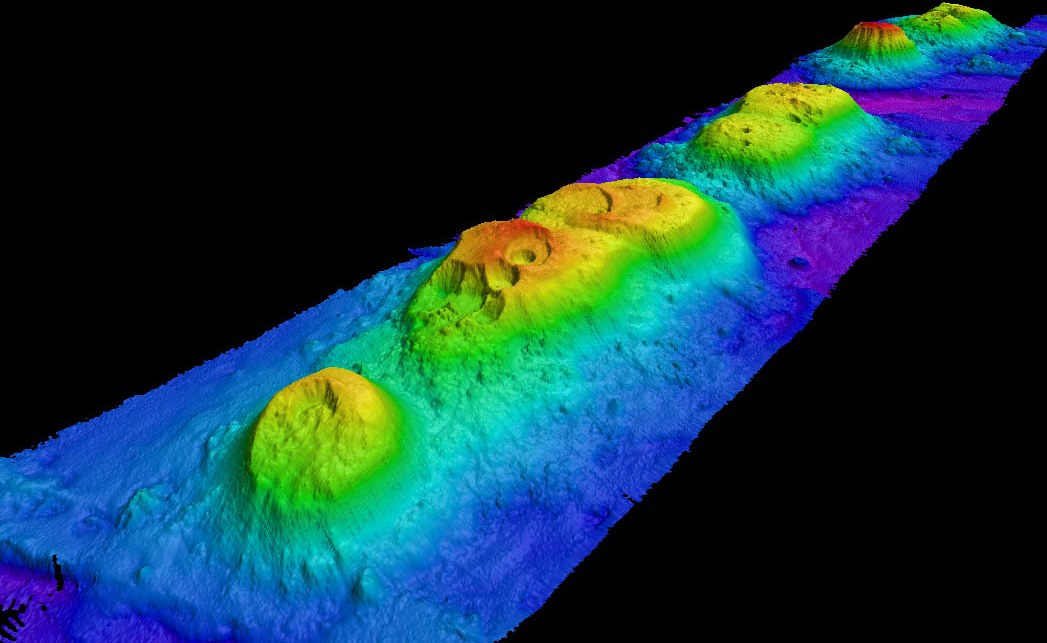
Donald Trump has opened up a 5,000 square mile marine conservation area to commercial fishing
The US President has rolled back protections at a major marine conservation area in the Atlantic Ocean, signing an order to allow commercial fishing in a stretch of water environmentalists say is critical for endangered right whales and other fragile marine life.

The Northeast Canyons and Seamounts Marine National Monument off the New England coast, created by former President Barack Obama, was the first national marine monument in the Atlantic Ocean, and one of just five marine monuments nationwide.

On Friday Maine Republican Sen. Susan Collins said Trump should be tackling bigger problems for the state’s fishing businesses rather than “Reopening the debate” on the marine national monument.

Rolling back protections for the marine monument “Is part of the Trump administration’s continued assault on environmental protections,” Elizabeth Turnbull Henry, president of the Environmental League of Massachusetts.
Trump’s decision will devastate protections for the underwater world along that stretch of New England, and threatens the end for right whales and other endangered marine animals
Kristen Monsell – senior attorney for the Center for Biological Diversity environmental group.
The Northeast Canyons and Seamounts National Marine Monument has already withstood a legal challenge by fishermen who opposed its creation. The Trump administration has reviewed a number of national monument designations used by Obama to protect land and water.

10 things you didn’t know about seamounts…
- A seamount is an underwater mountain with steep sides rising from the seafloor. Seamounts are often remnants of extinct volcanoes and come in a variety of shapes and sizes.

2. Seamounts function as “oases of life,” with higher species diversity and biomass found on the seamount and in the waters around it than on the flat seafloor.
3. Seamounts rise up high in the water column, creating complex current patterns influencing what lives on and above them. Over 850 species were found on seamounts in the Tasman and Coral Seas.

4. Seamounts also provide substrate (a location for attachment) where organisms can settle and grow. These organisms provide a food source for other animals.
5. Scientists have found that seamounts often provide habitat to endemic species, or species found only in a single location.

6. The life forms living hear hydrothermal vents, unlike any other life forms on Earth, do not rely on photosynthesis and the sun for their energy but on chemicals coming from beneath the surface of the earth.
7. Some cold-water corals are 5,000–8,500 years old or more, and some grow into beautiful structures that rise up to 35 meters high. Deep-sea corals, sponges and other habitat-forming organisms provide protection from currents and predators, nurseries for young fish, and feeding, breeding, and spawning areas for hundreds of thousands of species.

Image: Mountains in the Sea Research Group/NOAA/IFE
8. Because deep-sea species live in rarely disturbed environments and tend to be slow growing, late maturing and endemic, they are exceptionally vulnerable to extinction. Many deep-water fish species live 30 years or more. Some, such as orange roughy, can live up to 150 years.
9. Deep-sea coral and sponge communities are largely untapped sources of natural products with enormous potential as pharmaceuticals, enzymes, pesticides, cosmetics, and other commercial products.

10. Ancient deep-sea corals provide valuable records of climate conditions that may assist our understanding of global climate change.
SOURCE 1, SOURCE 2, SOURCE 3, SOURCE 4, SOURCE 5, SOURCE 6, SOURCE 7, SOURCE 8